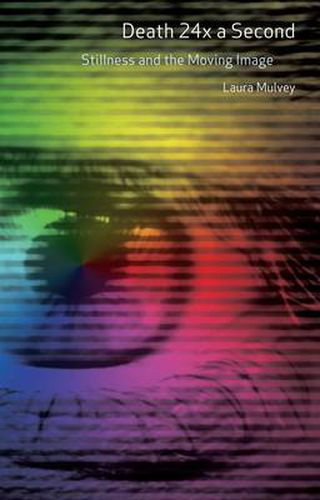Readings Newsletter
Become a Readings Member to make your shopping experience even easier.
Sign in or sign up for free!
You’re not far away from qualifying for FREE standard shipping within Australia
You’ve qualified for FREE standard shipping within Australia
The cart is loading…






In Death 24x a Second , Laura Mulvey addresses some key questions of film theory, semiotics, spectatorship and narrative. New media technologies, such as DVD, have transformed modes of film consumption and thus affected viewers’ relationship to the image and to narrative structure. DVD gives viewers control of both image and story, so that films produced to be seen collectively and followed as their linear narratives demand may be found to contain unexpected (even unintended) and multiple structures of pleasure. The tension between the still frame and the moving image coincides with the cinema’s capacity to capture the appearance of life and preserve it after death. Mulvey proposes that with the arrival of new technologies and new ways of experiencing the cinematic image, film’s hidden stillness comes to the fore, thereby acquiring a new accessibility and visibility. The individual frame, the projected film’s best-kept secret, can now be revealed, by anyone, at the simple touch of a button. Easy access to repetition, slow motion and the freeze-frame may well shift the spectator’s pleasure to a fetishistic rather than a voyeuristic investment in the cinematic object. Yet, there is another, narrative aspect to the stillness/movement tension that is not specific to the cinema but has been reworked and reinvented within the constraints of mass entertainment story-telling. Mulvey detects, at the present moment, an attraction to endings, and with the threat of ‘ending’ hanging over the cinema itself, there is an extra awareness of the death-like properties of narrative closure. Inevitably, such a conjunction shifts the attention of the psychoanalytically influenced critic away from a preoccupation with the erotic, as the propelling force of narrative, towards death. Freud’s concept of the death drive as applied to narrative structure allows a theoretical reassessment of cinematic story-telling which ultimately converges with cinema’s inherent stillness, its own death-like properties.
$9.00 standard shipping within Australia
FREE standard shipping within Australia for orders over $100.00
Express & International shipping calculated at checkout
In Death 24x a Second , Laura Mulvey addresses some key questions of film theory, semiotics, spectatorship and narrative. New media technologies, such as DVD, have transformed modes of film consumption and thus affected viewers’ relationship to the image and to narrative structure. DVD gives viewers control of both image and story, so that films produced to be seen collectively and followed as their linear narratives demand may be found to contain unexpected (even unintended) and multiple structures of pleasure. The tension between the still frame and the moving image coincides with the cinema’s capacity to capture the appearance of life and preserve it after death. Mulvey proposes that with the arrival of new technologies and new ways of experiencing the cinematic image, film’s hidden stillness comes to the fore, thereby acquiring a new accessibility and visibility. The individual frame, the projected film’s best-kept secret, can now be revealed, by anyone, at the simple touch of a button. Easy access to repetition, slow motion and the freeze-frame may well shift the spectator’s pleasure to a fetishistic rather than a voyeuristic investment in the cinematic object. Yet, there is another, narrative aspect to the stillness/movement tension that is not specific to the cinema but has been reworked and reinvented within the constraints of mass entertainment story-telling. Mulvey detects, at the present moment, an attraction to endings, and with the threat of ‘ending’ hanging over the cinema itself, there is an extra awareness of the death-like properties of narrative closure. Inevitably, such a conjunction shifts the attention of the psychoanalytically influenced critic away from a preoccupation with the erotic, as the propelling force of narrative, towards death. Freud’s concept of the death drive as applied to narrative structure allows a theoretical reassessment of cinematic story-telling which ultimately converges with cinema’s inherent stillness, its own death-like properties.